Full Guide To Malachite vs. Azurite (This Is The Difference)
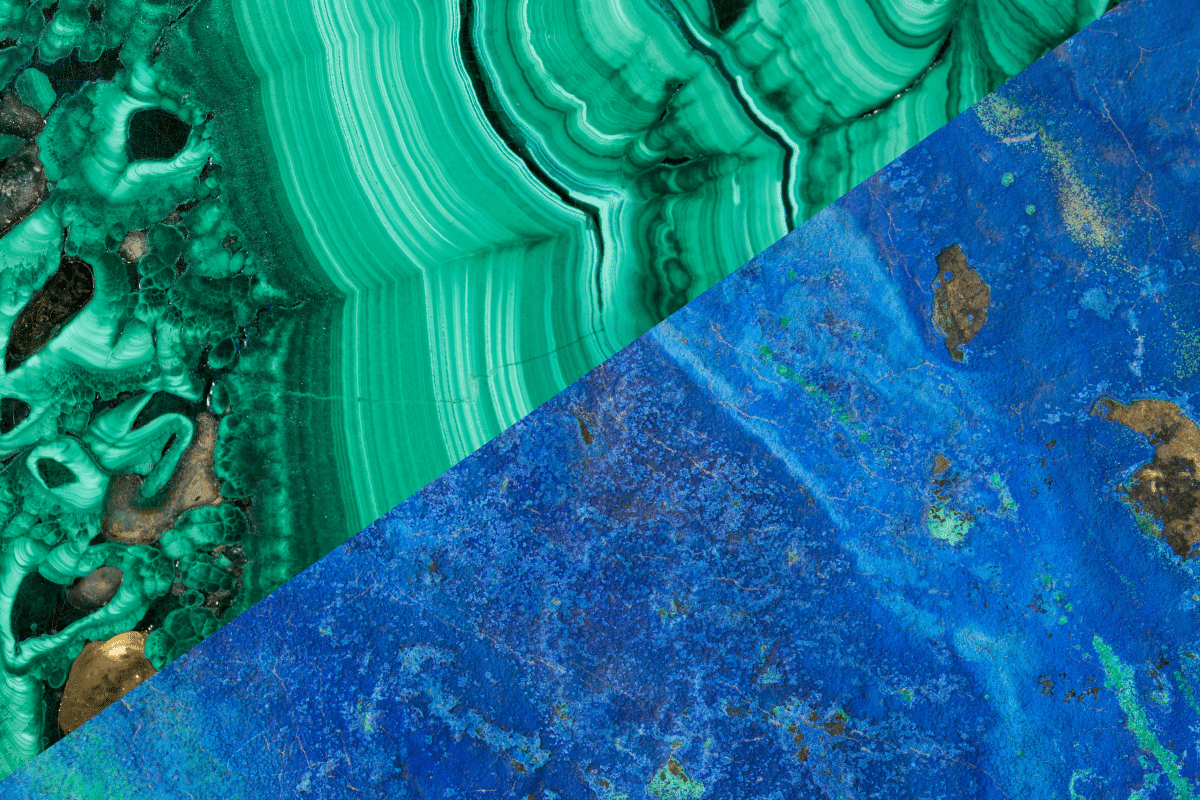
In order to work with our crystals effectively, we need to understand their properties. With crystals that look similar or have similar uses, such as Malachite vs. Azurite it can be difficult to determine which one to work with. The answer should always be; the one that you are drawn to the most. However, if you are looking to find the difference in physical appearance as well as metaphysical properties, you’ll find your answer here.
Malachite and azurite are formed the same way and are always found together. Malachite is green with light or darker banding, while azurite is blue without such a pattern. Malachite is used in matters of the heart, and azurite is used for all things communication.
Continue reading if you want to know more about the (physical) qualities of these stones, as well as how you can use them in your spiritual practice..
Also Read: Jade vs. Malachite: What’s The Difference?
Want more help or information? If you have any more questions after reading this blog post or want a personal answer for your specific situation, join the free Facebook group! We promise you’ll get an answer from either our team members or a community member.
Malachite vs Azurite – How To Tell The Difference?
In order to understand the difference between these two stones, we can look at the color, shape, pattern, clarity, and more. Below we’ll describe all these aspects in detail.
Chemical Composition
Both malachite and azurite are secondary minerals that form in copper ores. This basically means that the mineral is created as a result of copper ore being altered by other elements. In this case, copper ore comes into contact with carbonated water. The copper ore dissolves in the water in small amounts and then evaporates to form this beautiful blue stone.
The chemical formula of these two stones consists of copper carbonate hydroxide. Upon chemical testing, malachite may at times contain zinc impurities while azurite comes free from any trace elements. The chemical formula of malachite is Cu2CO3(OH)2, whereas azurite’s is Cu2CO3(OH)2.
Due to the stones’ similar formation process, malachite and azurite can also be found mixed in the same stone. This stone is known as azurmalachite.

Color
Besides being formed through the same process and the fact that these stones are always found together, the stones will have contrasting colors. Malachite forms into a vibrant green stone while azurite forms into blue stones. The color hues on the stones may vary from light to darker shades.
The color difference is caused by the difference in the structure of these stones. The structural difference may affect the absorption of copper ions resulting in the color difference.
All malachite species are green in color while azurite varieties include smoky, green, and blue stones.
The blue azurite variety can be intense in color, almost violet. This shade is mostly referred to as azure blue from which its name is derived.
Pattern and Clarity
Malachites are translucent to opaque in clarity. The stones are also quite brittle and show an uneven fracture and perfect cleavage. Malachites have banding formations and light–green lines seen on the surface of the stone. A malachite stone is patterned with dark/light green swirls all through the stone. The luster on these stones can be vitreous (glass-like) or extraordinarily brilliant and shiny.
Azurite, on the other hand, is often opaque with an earthy or dull luster. Translucent azurite is also found though rare. Azurites receive wax treatments to improve their luster and appearance.
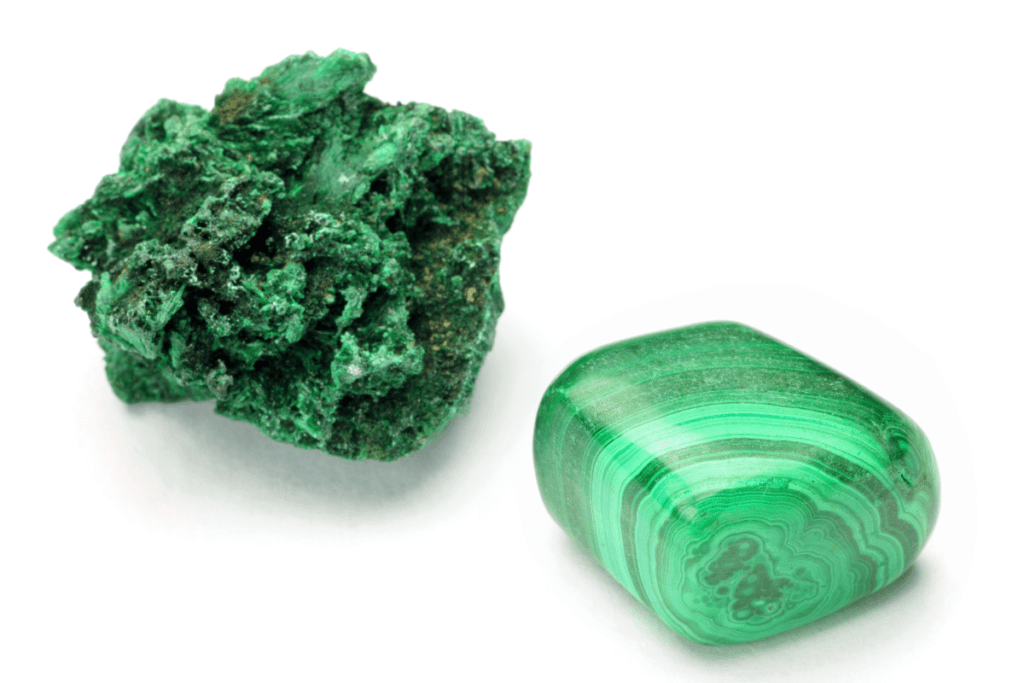
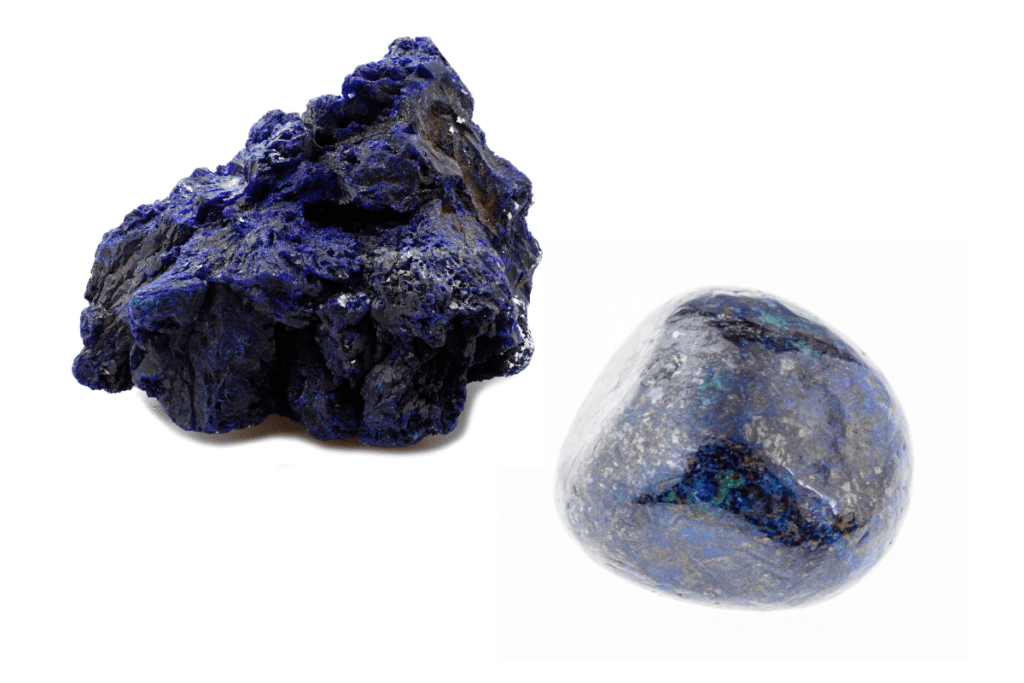
Location
Malachite is a mineral that is commonly abundant in Africa, especially in the Congo region. The mineral can also be found in France and the Ural Mountains of Russia.
Pure azurite is not easily found. However, azurite mines can be found in Russia, France, and Mexico.
Hardness.
Both stones are fairly soft stones rating 3.5 – 4 in hardness on the Mohs scale. If you’re unfamiliar, the Mohs scale of hardness determines a stone’s hardness by measuring how scratch-resistant it is. According to this scale, a stone can scratch any other mineral with a lower score. For reference, talc is a 1, whereas diamond is a 10.
Their brittle nature makes them susceptible to breakages and therefore requires care when handling.
Care
Use mild detergent and warm water to clean malachite and azurite jewelry, but do not soak them. This will turn the water toxic and damage the stones. Additionally, mechanical cleaning methods should be avoided. This is because intense vibrations can fracture soft and fragile stones.
Malachites and azurites are fragile both in their raw and finished forms. Also, both stones are toxic in their natural (raw) form. Due to this care should be taken when handling these stones. It also means that the stones cannot be used in making crystals essences or infusions of any kind that can be ingested.
Both stones should be kept away from sunlight. The stones are prone to tarnish when exposed to direct sunlight. Anti-tarnish strips can be used to prevent fading especially on the azurite stones. Azurite may turn black or green when exposed to sunlight for prolonged periods.
As they are so soft, we recommend keeping the jewelry away from harder objects and keeping them in a lined box.
Also Read: Can Malachite Go In Water? (Full Guide)
Cleansing and recharging
There are many ways to cleanse and charge crystals. Methods used for both malachite and azurite should not include water because the stones are soft and porous especially malachite. Therefore, soaking or washing in (salt) water is not an option for them. Additionally, we also do not recommend charging them with sunlight. This is to prevent fading and corrosion.
The best cleansing and recharging options for these stones are moonlight and leaving the stones in the presence of cleansing crystals like clear quartz or selenite. They can also be recharged by burying it in the ground for a few hours, but beware, the earth is dry. If not, the stone will release toxins into the ground.
Uses
There are many different ways to use these high vibrational stones. Below we’ll outline a few options for you.
Jewelry
Both stones have a gorgeous color and can be used in jewelry. however, they are both very soft and thus should not be worn every day if you want to keep them looking beautiful. Azurite is rarely used alone in jewelry pieces and is instead often combined with malachite.
Feng Shui
Fengshui is a practice that originates and is famous in Chinese cultures. This practice emphasizes the placement of objects and their influence on the flow of energies.
Both stones are instrumental in Feng shui practices. Malachite is associated with the wood element. The wood element represents health, abundance, growth, and new beginnings. Malachite stones should be placed in the areas associated with the health and prosperity of the home.
Azurite cleanses and unblocks blockages of energies. In Feng shui, azurite will set the mood and invite creativity. The stone is great to have for your office for daily inspiration. Azurite is good for personal energies as well.
Also Read: The Complete Guide To Wearing Malachite
Properties
Beware that crystals are never a replacement for professional medical help. If you have any issues, see a doctor first
Malachite is an earth element stone, which amongst other things, deals with fertility. As a result, anyone with a uterus would do well with keeping malachite close. Especially when experiencing menstrual cramps, labor pains, or irregular menstrual cycles.
Malachite is a powerful tool in manifestation and bringing our dreams and wishes into reality. The stone reminds us to take part in the making of the realities we wish for.
In ancient times, malachite stones were used as talismans and amulets for peaceful sleep and to protect children from evil spirits while asleep.
Azurites are used to treat memory loss and are also used to improve the body’s immunity and flush toxins out of the body. Additionally, azurites are used to treat migraines and headaches, promote strong bones and teeth, and treat spine-related conditions.
Azurite’s metaphysical abilities are clearing energy blockages and increasing inner vision. The stones have long been used as a communication tool with spirit guides. Azurite is also a powerful chakra healer and aura cleanser.
Chakra Association
Chakras are the different energy points in our body. There are 7, each of them linked to a certain aspect of our lives. We can link each chakra to crystals or gemstones by color.
- Root chakra (Muladhara)- is represented by black/red and is located at the base of the spine. This chakra is related to stability.
- Sacral Chakra (Svadihsthana/ spleen)- is represented by orange and is located below the navel. The sacral chakra is associated with feelings.
- Solar Plexus Chakra (Manipura)- is represented by yellow and is located above the naval. The solar plexus chakra is related to intellect.
- Heart Chakra (Anahata)- is represented by green/pink and is located in the chest area. This chakra is associated with loving and emotional healing.
- Throat Chakra (Vishuddha)- Is represented by blue and is located at the end of the throat. This chakra is associated with communication and tangible dialogues.
- Third Eye Chakra (Ajna)- Is represented by indigo and is located between the eyebrows. The chakra is related to spiritual understanding.
- Crown Chakra (Sahasrara) is represented by white and is seen as our connection to the divine.
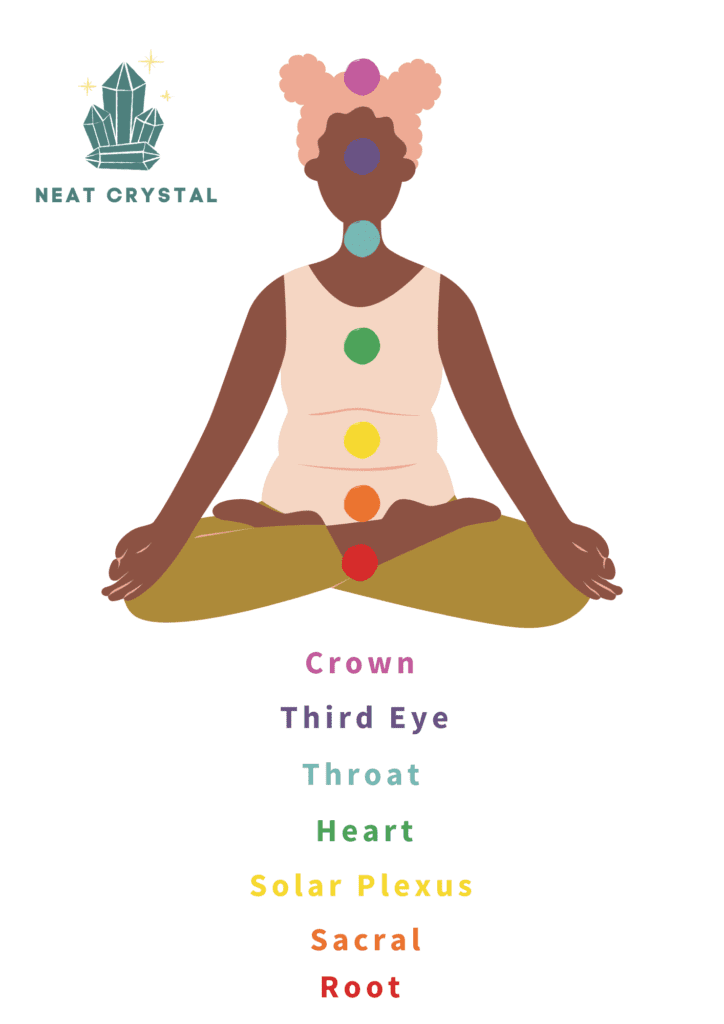
Malachite is assigned to the heart chakra owing to its green color. The heart chakra controls how we give and receive love and empathy and how we deal with and accept change.
Malachite is also involved in activating and unlocking other chakras. Malachite can be placed on the solar plexus chakra to help in processing and letting go of the trauma and negative feelings. Malachite can be used on the third eye chakra to enhance psychic abilities.
Azurite is used to activate the crown and third eye chakras. The stone links both chakras to enhance psychic abilities, lucid dreams, intuition, and insight.
Zodiac Association
Neither malachite nor azurite is a birthstone. However, malachite associated with Venus, which also rules Taurus and Libra. As a result, these signs will benefit from working with this stone immensely. It will help them with self-love and self-acceptance. Additionally, malachite benefits Capricorn and Scorpio zodiac signs too. Malachites are the best remedy to keep Scorpio’s energies protected and grounded. Malachite helps Capricorns in growth and transitions. Capricorns are generally hardworking and driven individuals. The stone encourages them to take risks and eliminate negative energies that may deter them from reaching their goals.
Azurite is associated with Jupiter (also rules Sagittarius and Pisces) and Uranus (Aquarius). When used in meditation and healing practices, azurite will help bring balance to Sagittarius and Pisces as well as increase focus and patience.
Aquarius is believed to be a compassionate, creative, and open-minded zodiac. On the flip side, some of its negative traits are arrogance and rebellion. The azurite will help Aquarius in working on bringing the best out of them.







Element Association
Malachite draws its energies from the earth element. The earth element signifies rebirth, grounding, stability, harmony, and responsibility. Earth crystals like malachite can be used to bring stability and happiness when you are feeling unstable.
Azurite is associated with the air element. The air element represents creativity, intuition, and imagination. Air element crystals like azurite can be used to enable communication and also possess powerful cleansing abilities.


Numerical Vibration
Malachite vibrates at the frequency of 9. The number in numerology signifies completion, being the last single-digit number. Number 9 is used to represent endings, new beginnings, and wisdom. Stones that vibrate at this frequency are a great way to understand the cycle of life and how to embrace change toward a higher purpose
Azurite, on the other hand, vibrates at the frequency of 1. The number signifies new beginnings, determination, and self-reliance. People who resonate with this number are often goal-oriented, ambitious, and strong-willed. Azurite comes in as an aid to help these people relate better with others, listen, and hit a healthy balance.
Best Combinations
To get the most out of working with our crystals, it is a good idea to combine them with other stones. This amplifies their abilities.
Malachite combined with chrysocolla will help balance emotions and let go of the hurtful feelings from the past. When chrysocolla is used together with azurite, the combination will not only work well with emotional stability but will enhance psychic abilities as well.
Malachite is also used together with azurite to relieve stress and anxiety.
Azurite paired with high-frequency stones like danburite develops psychic abilities and a connection between the mind, heart, and the spiritual realm.
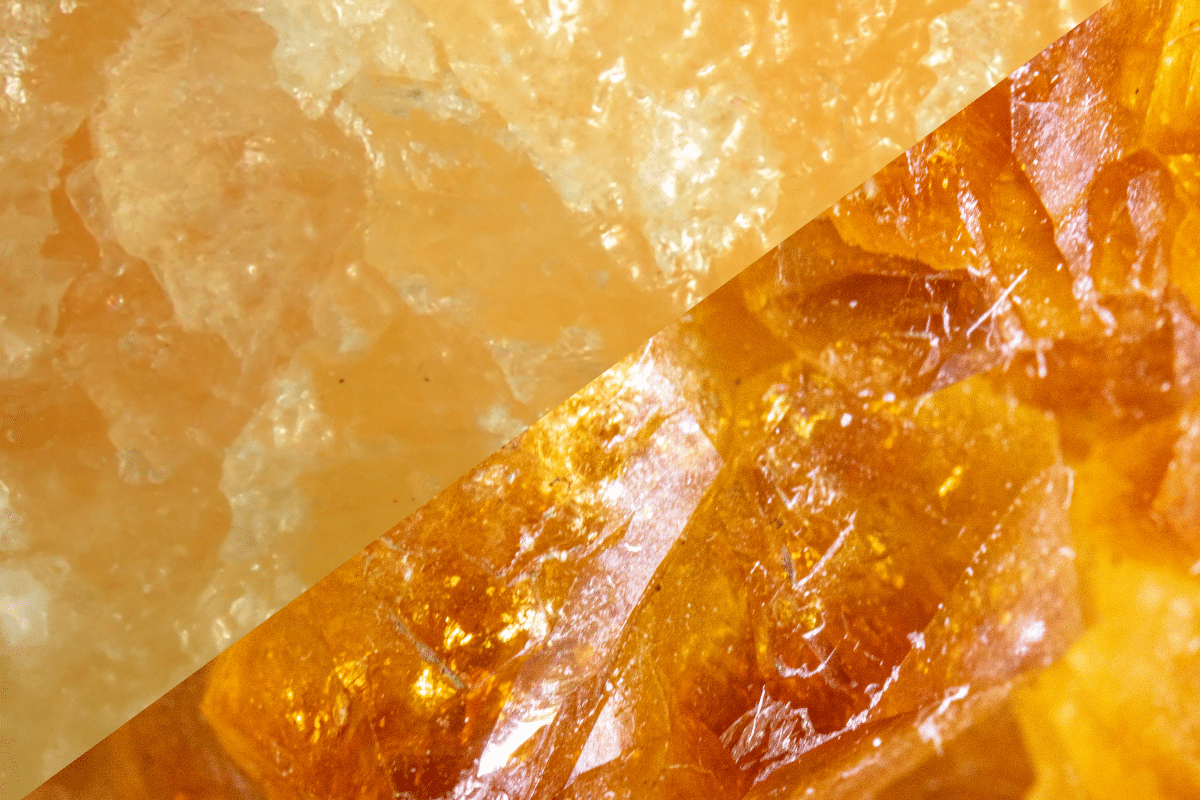

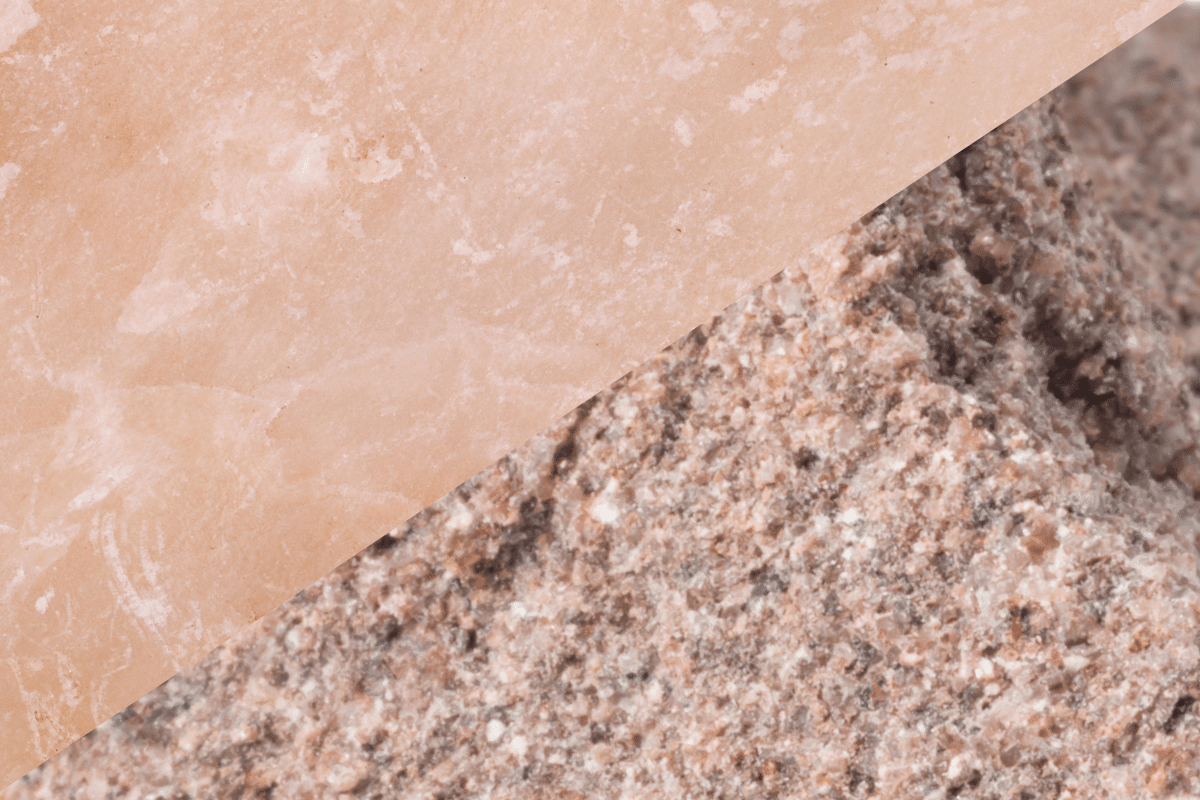




5 Comments